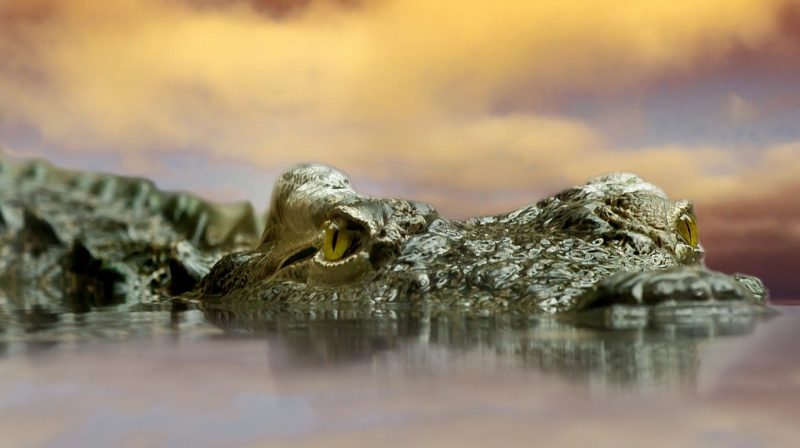
Physiology project work
As part of our final project for the Physiology Course, we were supposed to deliver an oral presentation in which we had to compare normal human physiology with the physiological adaptations of various animal models. By evaluating the model’s usefulness, we gained a deeper understanding of human physiology and … as usual … we had a lot of fun working in teams!
My team and I decided to study crocodiles’ cardiovascular and respiratory systems and see how our findings could provide us with some interesting insights into human pathophysiology.
Believe it or not, crocodiles and birds are pretty close relatives … think of them like brother and sister if you want! Diapsida is in fact their common ancestor! And so, in our analysis, we started by comparing humans’ breathing patterns to that of birds and crocodiles (to make things more intriguing!).
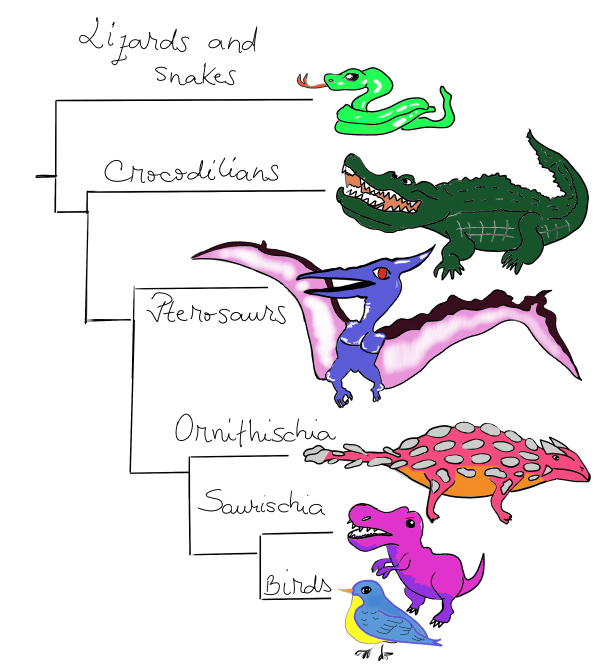
Surprisingly, we have discovered that some spaces, known as “locules”, situated in the crocodile’s lungs are reminiscent of the birds’ air sacs. Another interesting feature is the caudal sac-like structure that crocodiles use to store air.
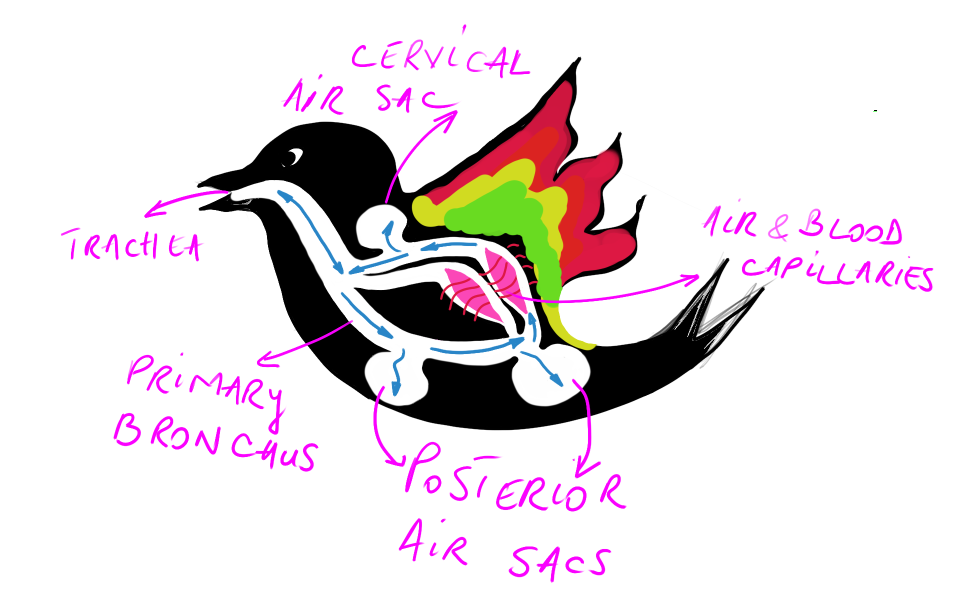
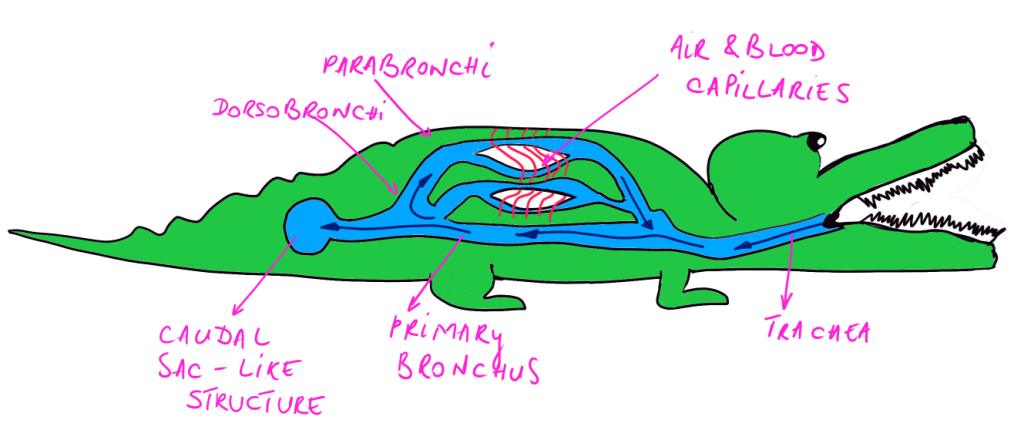
Just like us, the crocodilians possess a four-chambered heart. However, they are endowed with 2 aortas that communicate with each other through what is called “the foramen of Panizza”. Moreover, a structure known as the “cog-toothed” valve is in charge of closing off the common pulmonary trunk when the crocodile is holding its breath, thus redirecting the blood flow from the lungs to the rest of its body that is in greater need of oxygen. Here, we have also identified other possible explanations for why crocodiles can spend so much time underwater such as their metabolic rate and the use of anaerobic glycolysis to provide some energy.
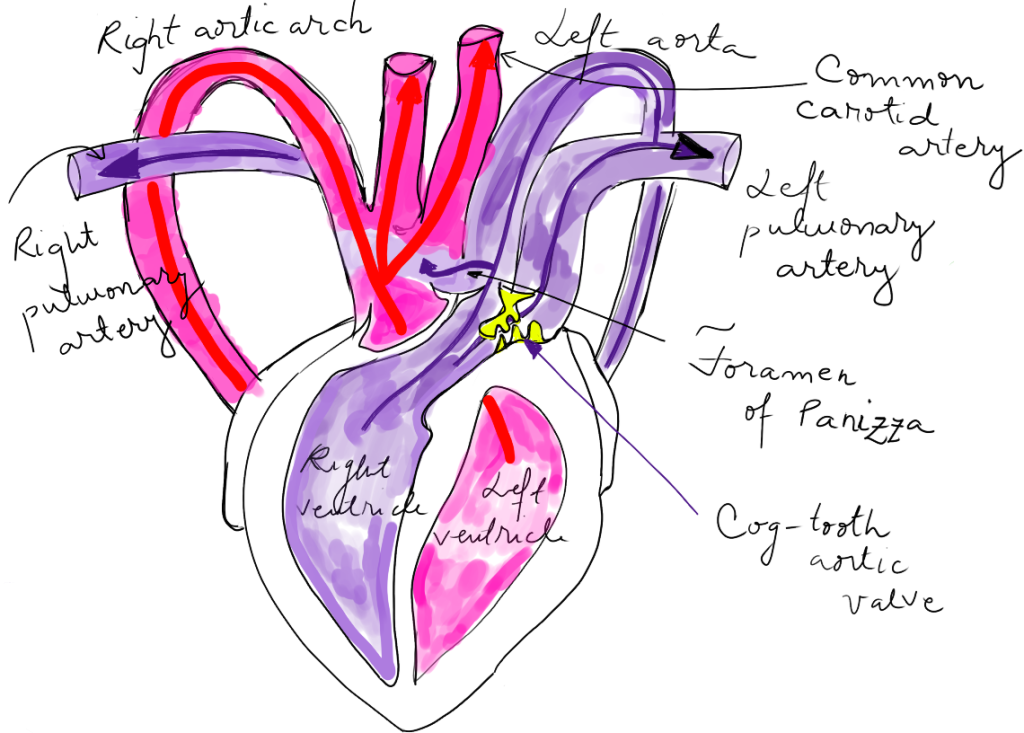
After we emphasized the anatomical peculiarities that enable crocodiles to stay submerged for a very long time, we took a deep dive into this reptile’s unique hemoglobin and we discovered that several interconnected mutations are responsible for the croc’s bicarbonate triggering mechanism which makes sure to supply substantial amounts of oxygen to its hard-working tissues.
Our discussion focused on the similarities between the biphasic pressure development in the right ventricle in crocodilians and different human diseases such as pulmonary stenosis. On top of that, we touched upon the prospect of developing hemoglobin molecules that are part-crocodile and part-human that can be used for emergency transfusions.
For this project, even though we had to prepare as a group, the oral presentation was done individually. Reporting our findings was supposed to take 10 minutes and was automatically followed by a 5-minute discussion with the teacher. My teacher was very supportive of my unique presentation style and guided me through his questions to deepen the subject even more!
If you have any questions or curiosities, do not hesitate to contact me by email!

Vlad – Biomedicine (BSc)
I'm Vlad, your Romanian blogger who comes from the very homeland of Dracula, Transylvania. While completing my first degree in International Business, I based my undergraduate thesis on the inconsistency of biological analogies in Economics. I began to study the genomes of ants and thus gravitate towards Biomedicine and KI. I chose Karolinska because of its academic and research excellence and because one day I wish to be able to make a difference in the field of Cancer Genetics. Visiting the remarkable collection of preserved medieval manuscripts from the Kungliga Biblioteket is on my bucket list.

0 comments